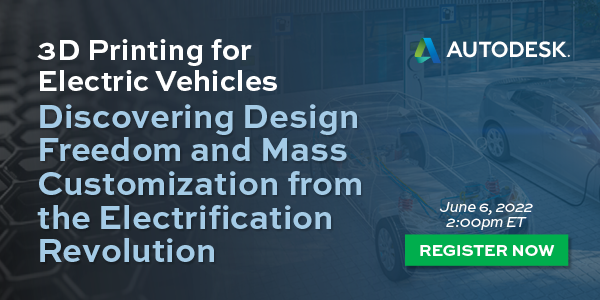on ZF, the RAV4 Prime, Ford Outdoors, OEM-Supplier Relations & Even More
How is ZF transforming its business? What is the Toyota RAV4 Prime all about? Why is Ford creating outdoor-style packages? How are OEM-supplier relationships? All that and more? (Yes.)
How ZF Is Shifting to New Tech
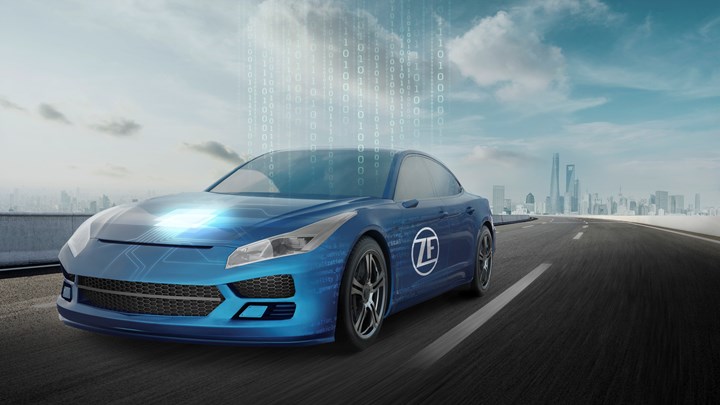
ZF is making a transition to electric, autonomous and digital tech in support of the auto industry by taking approaches more characteristic of a start-up than a company founded more than 100 years ago. (Image: ZF)
For many people, ZF is thought of as a developer and manufacturer of automatic transmissions.
And it is.
But one of the things electric vehicles don’t need is a sophisticated nine-speed. A one-speed gearbox can do the trick.
Which, you might think, would put ZF in something of a bind.
But the company, which was established in the first decade of the last century as a supplier to Count Ferdinand von Zeppelin for the production of, yes, zeppelins (and other airships) didn’t manage to continue to exist and prosper (in 2021 it had revenue of 38.3-billion euros, up over both 2020 (32.6 billion €) and 2019 (36.5 billion €) despite the fact that in 2021 it calculates that it lost sales of about 2.7 billion € due to vehicles that weren’t built because of the chip shortage) because it has focused on doing what it has always done.
Martin Fisher, is president of ZF in the U.S. Not surprisingly, he says that the company is focused on technologies related to autonomous driving, electric mobility and integrated safety. He acknowledges that many of the technologies are software-centric. Which could be jarring to a company that has long manufactured powertrain and chassis components and the like.
Yet ZF has moved into the realm of developing sensors, e-beam axles, steer-by-wire systems. It is working with NVIDIA and Microsoft.
It is doing things that you might not think of when the term “traditional Tier One supplier” is used. For ZF, “traditional” does apply in terms of heritage, but there is nothing about what it is doing that could be considered typical for a Tier One.
How do they do it?
Fischer says that one of the approaches they take is developing teams that operate independently from the main organization and have as their mandate the development of new technologies. “The focus has to be on new things,” he says.
One important aspect of this is that there is leadership support of these undertakings—from the top all the way down through all levels of management. It isn’t a matter of these teams having to continually justify their existence.
Something that could be overlooked are the people who are doing the day-to-day work on the products that are still substantially contributing to ZF sales. Fischer says educating these people on new technologies is done so they know they are part of what will be the future of the company.
Education about the future of the organization can lead to excitement among the employees.
“We have a startup mindset,” Fischer says. “It is a real joy.”
///
///
2022 RAV4 Prime XSE AWD
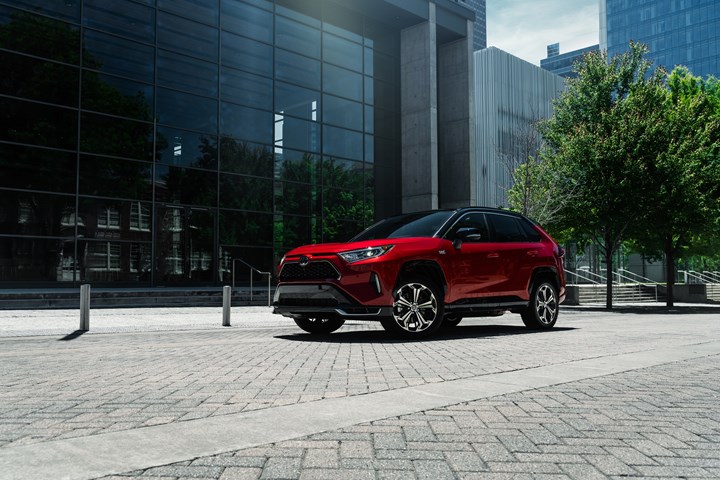
The RAV4 Prime. A small crossover that provides performance both in terms of its acceleration (although let’s not get too carried away here: this is a family car that you might let your teens drive, too) and its fuel efficiency. (Image: Toyota)
In its sales reporting Toyota does something that others don’t—or perhaps that should be “can’t” do: have a separate chart for its electrified vehicle sales.
This is not to say that other companies don’t have electrified vehicles.
But in their cases you could pretty much accommodate all of the data on a 3 x 5 card and have space left over.
In the case of Toyota—and it includes the Lexus models—there are 18 electrified vehicles, and with the addition of the bZ4X there are 19.
Given that one of the tenets of Toyota is “continuous improvement,” there is no question that in the 25 years that the Prius has been on the market (actually the anniversary will be in October, so I’m jumping the gun a bit), they’ve gotten better and better with the electrified products on offer.
Some numbers
In 2021 Toyota delivered 407,739 RAV4s in the U.S., which was down 5.3% from 2020, but a number that other OEMs undoubtedly long for. Of that total number, there were 120,983 RAV4 Hybrids delivered, which was up 5.3%. (To put these numbers into context, know that total 2021 sales of the Chevrolet Equinox were 165,323.)
Then there is another line item in this space, the RAV4 Prime, the plug-in hybrid. There were sales of 27,707 of those in 2021, which was up 765.8% over 2020.
Through the first quarter of 2022 there have been 5,233 RAV4 Primes sold.
I’d be willing to wager that the company could have sold far more weren’t there things like the continuing semiconductor shortage.
The Prime difference
The RAV4 Prime is the peppiest RAV4, providing a system horsepower output of 302 hp, of which 177 hp comes from the 2.5-liter engine. The regular RAV4 Hybrid has an output of 219 hp, of which 176 hp comes from the 2.5-liter engine.
Yes, a difference is bigger motors.
What’s more, the RAV4 Prime can travel ~42 miles on electricity alone. It has a bigger battery, too.
This gets a little confusing, so I’ll simplify it. The Prime gets an MPGe number as well as a set of EPA estimated fuel economy numbers. The Hybrid version just gets the EPA mpgs.
The MPGe number for the Prime is 94. The EPA numbers are 40 mpg city/36 highway/38 combined.
The EPA numbers for the Hybrid are 41 mpg city/38 highway/40 combined.
Either way, the fuel economy is good, and given the performance aspect of the Prime vs. the Hybrid, that 2 mpg sacrifice may be worth it.
Plug it in
The plug-in aspect means that there is about 42 miles of electric-only range. Plugging it in to a regular 120-Volt outlet will fully charge the battery in about 12 hours. If a Level 2 charger (240 Volt) is used, it is about 4 hours and 30 minutes.
Realize that the Prime is of a size that it is readily garage-able, with an overall length of 180.9 inches, width of 73 inches and height (depending on trim, with antenna), 67 or 67.2 inches. So parking it in a garage and plugging it into an outlet that you use for a power tool or leaf blower or something is not a problem.
The other thing to keep in mind is that this is a hybrid and as such there is that aforementioned 2.5-liter engine and a 14.5-gallon tank feeding it. So when 42 miles (or so) worth of electric operation is used up, its not like there need to be a frantic search for an available charging station.
You simply continue on your way.
The base MSRP for the Prime XSE that I drove was $43,125. There was some other stuff included, such as a premium JBL audio package ($1,620) that includes a 9-inch touchscreen with navigation and a package named “Premium,” which brings in a 10-inch color head-up display (that appears to be floating just outside the windshield), panoramic glass roof, 8-way driver’s and 4-way passenger’s power adjustable seats, and more. There are a few extra adds (e.g., mats, mudguards), too. All-in it stickered at $50,731.
But here’s the thing: I suspect that a vehicle like that would probably not make it off a car-carrier trailer before it was snapped up.
Even were there not a situation where gasoline is becoming increasingly expensive by the day, the RAV4 Prime is simply a solid vehicle to have.
///
Ford and the Great Outdoors

22 Ford Explorer and Expedition Timberline versions. Not Broncos, but still more off-road oriented than other trims in the vehicles’ lineups. (Image: Ford)
Ford has a good news-bad news situation on its hands, which it is hoping will turn into a good news-good news situation through some clever design, engineering and marketing.
The good news that it has is in the space of its newest utility vehicles, the Bronco Sport and Bronco.
Through the first quarter of 2022, the Bronco Sport sales were 29,089 units, or an increase of 24.5% over Q1 ’21.
The sales of the Bronco were 23,573 units in Q1 ’22. As it wasn’t available in Q1 ’21, there is no comparable percentage.
The bad news (or maybe it is really “not-so-good”) is that Q1 Explorer sales were 42,736 units, or a decline of 34.5% compared with Q1 ’21.
And Q1 Expedition sales, 9,718, were down 56.3%.
Getting outdoors
According to the “2021 Outdoor Participation Trends Report” from the Outdoor Industry Association, in 2020 141,416,000 Americans above age 18 participated in outdoor activities.
The most popular and the percentage of Americans participating:
- Running, jogging and trail running: 21%
- Hiking: 19%
- Freshwater, saltwater and fly fishing: 18%
- Road biking, mountain biking and BMX: 17.3%
- Car, backyard, backpacking and RV camping: 15.8%
What do many of these activities have in common? It takes a vehicle to get there.
And if people want to get really close to where they’re going to start their hike or to the fishing pond, a 4x4 may be necessary.
Here’s the clever bit
Ford has taken its Explorer and Expedition vehicles and is deploying what it calls its “Timberline” trim, which (1) addresses the increasing number of outdoor enthusiasts (and according to Craig Patterson, Ford SUV marketing manager, Millennials account for 28% of large utility sales for Ford, and given that they represent about 40% of the outdoor enthusiasts, that is a good demographic), and (2) provides Ford with still more product to address Jeep in the market (as the Broncos are doing).
(Know that they’ve also developed an array of other trims, like Expedition Stealth, too, but this off-road approach seems to be a sweet spot in the market—again, see the Bronco sales.)
Some comparison
So there’s the Expedition Timberline. Which has more available ground clearance that the Jeep Wagoneer—10.6 inches v. 10 inches—and weighs 4% less, so with a 3.5-liter EcoBoost compared to the 5.7-liter HEMI in the Wagoneer, its 440 hp is 48 hp greater and 510 lb-ft of torque is 106 lb-ft more than the Jeep’s, so it has a better power-to-weight ratio, which is what you want in an off-road vehicle.
While the differences aren’t quite as distinct between the Explorer Timberline and the Grand Cherokee L (e.g., the 2.3-liter EcoBoost I4 produces 300 hp and 310 lb-ft of torque v. the Grand Cherokee Pentastar V6 at 293 hp and 260 lb-ft), the Explorer Timberline is a variant in the lineup that includes the Base, XLT, ST-Line, Limited, Limited-Hybrid, ST, King Ranch, Platinum Hybrid, and Platinum trims, so any outdoor enthusiasts Ford gets is probably just upside.
(When announcing the Explorer Timberline last year, Kumar Galhotra, then president, Ford Americas & International Markets Group, acknowledged that it has “moderate off-road capability” (e.g., the use of shocks developed for the Explorer Police Interceptor and high-sidewall Bridgestone Dueler P265/65R-18 all-terrain tires raise the ride height 0.8 inches) but “great manners around town.” Yes, there are those who travel on trails. But mainly on concrete.)
In both cases the vehicles come in a Forged Green Metallic exterior color and Deep Cypress interior trim, so they certainly look the outdoor part.
///
Dog Bites Man. Toyota Tops Supplier Study.
Toyota is #1 in the 22nd annual North American Automotive OEM-Supplier Working Relations Index (WRI) study conducted by Plante Moran.
And Toyota was #1 last year and the year before that and the year before that and. . . .
Odds are you already know what the numerical rankings—based on the responses of 673 salespersons from 436 Tier 1 suppliers representing 41 of the top 50 North American suppliers, 71 of the top 100, and accounting for about 50% of the annual buy of the six automakers in question—are (with the score out of a possible 400 in parentheses):
- Toyota (345)
- Honda: (334)
- GM: (287)
- Ford: (242)
- Nissan: (219)
- Stellantis: (128)
Rather than dwelling on the numeric results, we talk with Dave Andrea, Principal in Plante Moran's Strategy and Automotive & Mobility Consulting Practice, to garner some insights that supplier and OEM personnel alike may find to be useful as they navigate what continues to be unusual conditions, whether it is driven by the resurgence of COVID cases or the continuing supply chain and semiconductor challenges.
The EV Challenge
As OEMs transform their portfolio from internal combustion engines to electric motors, this could have a negative effect on suppliers, especially those that provide components and systems for ICE vehicles.
Andrea says that OEMs must actively manage down the areas that are decreasing in importance as they manage up the procurement of things like batteries, motors, power electronics and things not in the typical BOM.
The EV Opportunity
Suppliers do have a potential opportunity they generally haven’t had before: there are new OEMs on the scene (and not-so-new Tesla, too).
Andrea says that some of these startups are conducting business differently with suppliers, with some paying in advance for things ranging from engineering to tooling.
What Do OEMs Need More Of?
Transparency. And trust.
Andrea says that one of the challenges that suppliers face are getting realistic expectations from the OEMs about things like volumes and pricing.
This is particularly an issue now, not only because of the supply chain issues and semiconductor absences that have changed production volumes, but because of the transition to EVs.
Consider a supplier of ICE components. Without some specificity about OEMs’ long-term strategies regarding the propulsion systems that will be used, the supplier doesn’t have a clear idea when it comes to its investments.
A situation suppliers can ill-afford.
Volumes and Prices
A gargantuan problem caused by the supply chain and semiconductor situations is that production volumes are in a state of agitation.
Andrea says that suppliers that have piece part quotes based on X-units per year are finding that X volumes aren’t being met, so they need to recover some of the costs associated with the lower volumes.
While the OEMs have systems in place to deal with these issues, due to the large number of cases, these systems are bogged down.
What’s more, there is, Andrea says, a case where suppliers are asked for certain documentation. . .and then more. Which further slows down the situation.
Needless to say, this leads to irritation. To understate the case.
Too Much Turnover
Andrea says that there has long been a practice to rotate people out of a particular position in purchasing after three to four years, not necessarily for career development but because it is thought that after a period of time individuals would become comfortable with one another such that they wouldn’t work to get the best price.
This situation has been exacerbated by the Great Resignation and retirements.
Andrea says a result is that decision-making—when there are cases of two or three different buyers within a 24-month period, buyers who likely don’t have an experience base with the components or materials in question—is greatly slowed.
Integrity
One metric that should give the Traditional Three pause is “Buyer Integrity.”
In the case of all three, there are declines that are, according to Plante Moran, statistically significant.
This can’t be good for supplier relations.
///
Rolls Art on Wheels
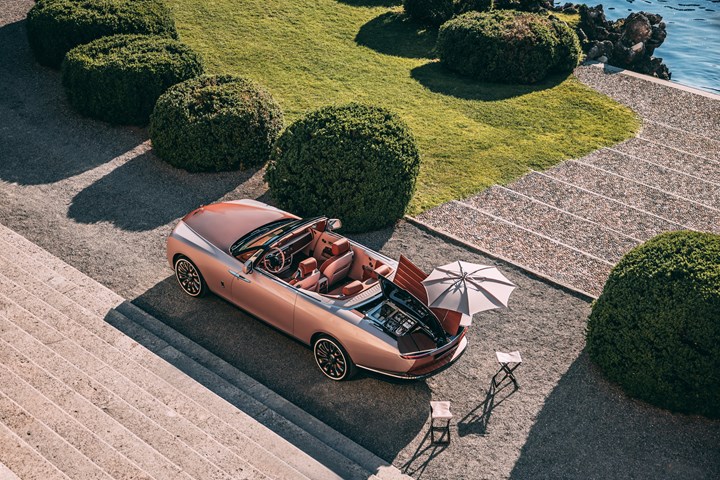
The latest Rolls-Royce Boat Tail. Because you never know when you might want to picnic. (Image: Rolls-Royce)
Last weekend, at the at Concorso d'Eleganza, Villa d'Este 2022, on the shores of Lake Como in northern Italy, Rolls-Royce presented a commissioned, hand-built Boat Tail to a customer (which Rolls calls a “patron,” presumably because this was from Rolls’ hyper-special Coachbuild operation) “whose family business has grown from his father's origins in the pearling industry.”
(There’s a lot to unpack in that sentence.)
Know this about the vehicle:
- All the body panels are aluminum
- The Pantheon Grille is milled from a single solid billet of aluminum
- The Spirit of Ecstasy hood ornament is made with rose gold
- The exterior color is based on four pearl shells
- The primary color is a blend of oyster and soft rose; large white and bronze mica flakes add a pearlescent quality
- The hood is cognac colored; it contains fine bronze- and gold-colored aluminum mica flakes. There is a crystal and iced-matte clear coat
Alex Innes, head of Coachbuild Design, Rolls-Royce Motor Cars on the overall execution of the vehicle:
“The result far exceeds a means of conveyance to become, quite literally, a moving work of art.”
This Boat Tail is one of three that have been commissioned. And there will only be three made.
///
Nomenclature Quiz
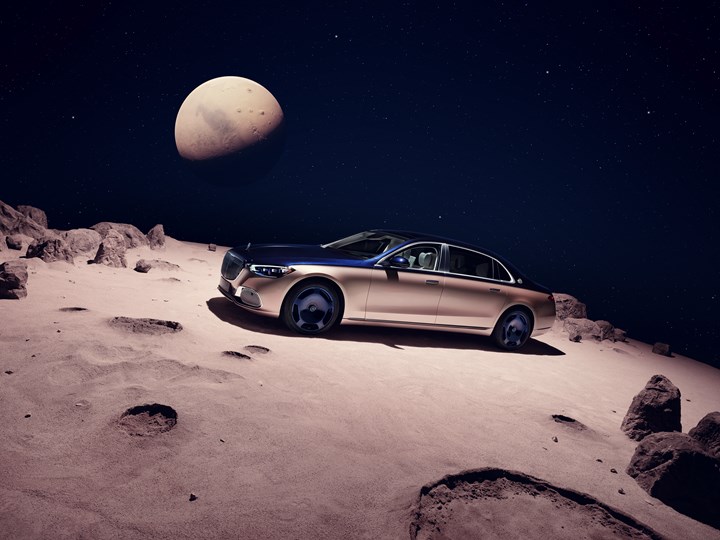
Maybach concept. It is not clear why it appears to be on another planet. (Image: Mercedes-Benz)
This is Gorden Wagener, chief design officer of Mercedes-Benz:
“It is about exquisite materials, quality, the best workmanship, traditional craftsmanship, state-of-the-art technologies, and trendsetting design.”
What is “It”?
[You’ll have to scroll down to get the answer. You don’t want it to be too easy, do you?]
///
About That Semiconductor Shortage. . .

Renesas will be reopening this semiconductor factory, which was closed in 2014. (Image: Renesas)
In response to the semiconductor shortage—which has been with us for a while now and estimates as to when it is going to end varies with a given executive’s level of optimism—there have been announcements from companies like TSMC and Intel that they’re spending billions on building new factories.
But here’s something that’s a bit different:
Renesas Semiconductor Manufacturing has announced it is investing 90-billion yen (~$700-million) in a semiconductor factory in Japan. . .that it closed in October 2014.
The Kofu Factory, which is located in Yamanashi Prefecture, some 80 miles west of Tokyo, had been used to produce 150-mm and 200-mm wafers.
With the new investment it will reopen in 2024 with 300-mm capability, producing power semiconductors (e.g., IGBT, power MOSFET) that can be used in electric vehicles.
Wouldn’t this have been something they would have thought of earlier in chip drought?
///
Nomenclature Quiz Answer
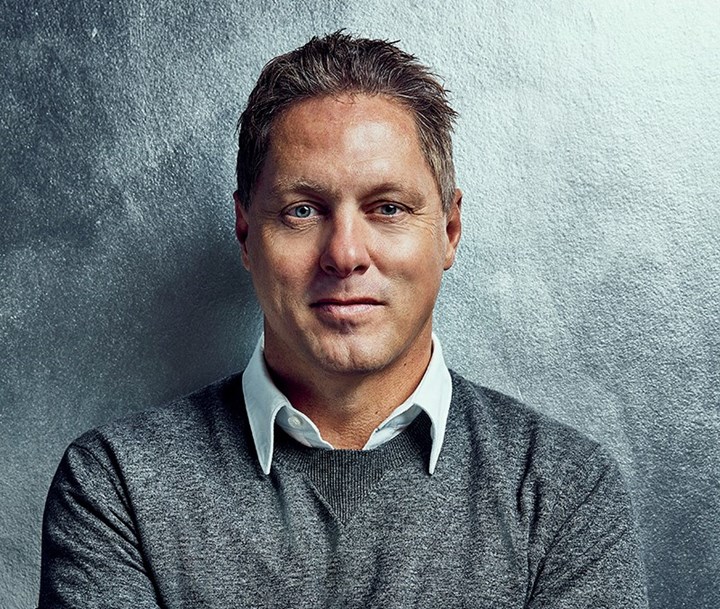
Gorden Wagener, Mercedes Chief Design Officer: “The style of our house, which we have continued to refine over the past 15 years, is our design philosophy of Sensual Purity. It is our aesthetic soul and the core of our brand DNA.”
“It” is “Luxury.”
Design chief Gorden Wagener says “What people understand as luxury varies from person to person.”
Consequently, different brands within his purview have different types of luxury associated with them:
“Maybach is about the pinnacle of the top-end luxury segment. That is why we speak of Sophisticated Luxury here. Mercedes-Benz embodies Modern Luxury of the highest quality. And Mercedes-EQ, our pioneering brand for e-mobility, embodies Progressive Luxury. This differentiation is clearly defined by design.”
Wagener also says:
“Currently, our focus is on what we call the X-factor: the surprising and extraordinary element with which we want to exceed our customers' expectations. One example: We independently create digital art and bring it into the vehicle. But we consciously develop the topic further, now even completely independent of our vehicles. We are moving into dimensions where you would not necessarily expect Mercedes-Benz to be. For us as designers, this opens up completely new perspectives and opportunities to develop our creativity. Let us surprise you.”
Perhaps for the U.S. market Mercedes possibly needs to concentrate on customer expectations related to its vehicles.
According to Kelley Blue Book, sales in the U.S. market in Q1 2022:
- BMW: 73,714 +3.2%
- Lexus: 64,365 -13.3%
- Mercedes: 56,624 -37%
That surprises me.
RELATED CONTENT
-
On Electric Pickups, Flying Taxis, and Auto Industry Transformation
Ford goes for vertical integration, DENSO and Honeywell take to the skies, how suppliers feel about their customers, how vehicle customers feel about shopping, and insights from a software exec
-
Things to Know About Cam Grinding
By James Gaffney, Product Engineer, Precision Grinding and Patrick D. Redington, Manager, Precision Grinding Business Unit, Norton Company (Worcester, MA)
-
Increasing Use of Structural Adhesives in Automotive
Can you glue a car together? Frank Billotto of DuPont Transportation & Industrial discusses the major role structural adhesives can play in vehicle assembly.


.jpg;width=70;height=70;mode=crop)
